Bell’s Palsy: Cause, Symptoms, Diagnosis, Treatment, Exercise
Table of Contents
What is meaning of the word Bell’s Palsy ?
or
Definition of Bell’s Palsy :
- It is the condition defined as a :
- Sudden weakness in the facial muscles of half side of the face caused by dysfunction or affection of facial nerve.
- So it results in a inability to perform movement of muscles of affected side of face.
- Another name of Bell’s Palsy is: idiopathic facial paralysis. it is called as an idiopathic facial palsy because the cause behind the facial paralysis may remain unknown in majority of cases.
Introduction:
- It might be possible reaction of a viral infection.
- It occurs because of non – suppurative inflammation of facial nerve.
- Site of facial nerve inflammation :
- Inflammation of facial nerve occurs within its canal just above the stylomastoid foramen.
- Etiology behind the disease is mostly of unknown cause.
- It can occur at any age even the gender is also not specified.
- The onset of palsy Is often sudden, the patient may have a possible history of ear ache .
- The patient wake ups with the paralysis of facial muscles , having been perfectly better the night before.
What is the possible pathology behind the condition?
- The facial nerve becomes inflamed or swallowed within the facial canal.
- There was a limited space into the canal because it is a narrowed area.
- So the nerve gets compressed within it.
- And it occurs repeatedly , so the facial nerve losses it’s normal conductivity .
- And the muscles supplied by the nerve also losses their normal function.
What are the possible causes of Bell’s palsy?
Here is a list of some causes, that might considered as a possible cause of Bell’s Palsy .
- History of exposure of ear to extreme cold .
- Might be possible because of water retention during pregnancy.
- Previous infection of ear.
- History or present infection of herpes zoster viral infection.
- Upper respiratory tract infections.
- Idiopathic : means occurs because of unknown cause.
Which are muscles get affected by the Bell’s palsy?
There are number of facial muscles may get affected by Bell’s palsy which are innervated by facial nerve. So because of this motor and sensory both functions will become affected.it is described below in detail.
- Because of inflammation of facial nerve the motor and sensory both functions will be affected.
- Affected motor functions :
- The main muscles get affected are the as follow :
- Occipito frontalis:
- Action : Raises the eyebrows.
- Orbicularis occuli:
- Action : Closes the eyes .
- Corrugator and procerus :
- Action : Wrinkles skin between your Eyebrows and frowns.
- Zygomaticus major and minor, levatorangulioris ,levatorlabisuperioris :
- Action : Raises the corner of the mouth and upper lip.
- Buccinator :
- Action : keep the cheeks against the teeth during mastication and sucking Activities.
- Orbicularis oris:
- Action : Closes the mouth.
- Risorius :
- Action : pulls the angle of the mouth backward , as seen in grinning.
- Nasalis :
- Action : Depresses tip of the nose and help in elevation of corner of nostrils.
- Depressor angulioris and Depressor labii inferioris :
- Action : pulls down the angle of the mouth and your lower lip.
- Mentalis :
- Action : wrinkles your chin .
- It is very important muscle for drinking , because it holds the lower lip on the cup or bottle to prevent dribbling .
- Affected sensory functions :
- The facial nerve also supplies the sensation of pallet and anterior two / third of tongue.
- Also supplies the salivary glands present into mouth.
What kind of symptoms are seen in the patients diagnosed with Bell’s Palsy?
- Following symptoms are seen :
- The paralysis of face usually seen on one side , but rarely seen on both sides.
- Pain is seen as a onset into the ear , mastoid region , as well as around the angle of jaw.
- Patients sometimes may have temporal headache which is a red sign of caution.
- Upper and lower muscles of expressions are seen usually equally affected.
- So voluntarily and emotional movements are involved.
- Following Features may be seen Into patients with Bell’s Palsy :
- Loss of facial expressions is seen.
- Dropping of the corner of the mouth and mouth sag is also seen.
- Creases seen on the face and skin folds becomes smooth.
- Dropping of the eyebrow and wrinkles also seen.
- Forehead is seen without furrowing.
- Closure of the eye becomes impossible or difficult for the patients.
- Bell’s phenomenon is seen .
- What is the Bell’s phenomenon ?
- When the patient tries to close his eyes , there will be movement of eyeball in upward and slightly inward direction.
- It is called as a Bell’s phenomenon.
- Retraction of mouth and pursuing of lips is not possible by the patient.
- Dribbling of Saliva from the corner of the mouth is seen.
- Chewing and eating becomes difficult for the patients. because of paralysis of buccinator, there will be accumulation of food into the mouth is seen.
- Sometimes speaking also become difficult for the patients.
- Patients feels heaviness and numbness into the face.
- Deviation of tongue might be seen.
- In advance cases loss of taste sensations into two/ third of tounge is seen.
- Lacrimation might be seen reduced.
- Nasolabial folds becomes smooth and start deepening.
- So loss of normal function of facial muscles are seen.
How to diagnose Bell’s Palsy?
- The cause of Bell’s palsy is not known but your doctor can diagnose it on following bases :
- By asking the previous and present history to the patient related with viral infections.
- By assessing the functions of facial muscles during examination.
- Or your doctor may suggest you for investigations like :
- Electomyography (EMG)
- This investigation will help to know about the functions of facial muscles.
- Strength Duration curves or SD curves and RD Test .
- Nerve conduction studies ( NCS) :
- This investigations will help to know whether the stimulated muscles are Innervated, Denervated or partially Denervated.
Differential Diagnosis of Facial Palsy:
- Herpes zoster oticus :
- This disease also cause facial paralysis and hearing loss in the affected ear.
- Other Infections :
- For ex :Acute Otitis media, Lyme disease
- Multiple sclerosis :
- In this Disease the immune system attacks body’s nervous system.
- Gillian Barre syndrome :
- In this Disease the immune system attacks the nervous system of body.
- The condition may be triggered by bacterial or viral infection.
- Upper motor neuron palsy.
What is the Treatment of Bell’s palsy?
Treatment is divided into 2 parts :
Pharmacological treatment or Medical Treatment.
Physical therapy treatment.
- Pharmacological or Medical treatment :
- The medicines are prescribed by the physician after doing proper assessment.
- Corticosteroids are the first line treatment medicine for Bell’s Palsy.
- It gives best results when given 72 hours of onset of symptoms.
- It increases the recovery of facial nerve function .
- Other medicines prescribed are :
- Anti – viral medicine.
Physiotherapy Treatment for Bell’s Palsy:
Goals of management or treatment is described below :
- Goals of the Physiotherapy Treatment :
- To resolve the inflammation .
- To maintain muscle properties.
- To strengthen the weak facial muscles.
- To maintain blood circulation of the face.
- To decrease the facial asymmetry occurred because of paralysis.
- To know about the prognosis of the patient after treatment.
- To give the patient proper advises for home care and for external environment.
- Before starting of treatment , the assessment is done by your doctor.
- Evaluation is done mainly of following facial muscles :
- Muscles of forehead,
- Eye muscles.
- Oral muscles are being assessed.
- There are mainly 6 grades given according to the performance of muscle during assessment.
- Here , The grades of facial muscles are described in detail.
- Grade -1 :
- Gross function : Normal
- Appearance during rest :
- Normal
- Appearance during activity :
- Normal
- Grade -2 :
- Gross function : Slight weakness noted while giving effort.
- Appearance during rest :
- Normal
- Appearance during activity :
- Mild oral and forehead muscles asymmetry noted.
- Complete eye closure with minimal effort.
- Mild dysfunction is seen.
- Grade -3 :
- Gross function : obvious asymmetry with movement is seen.
- Contractures of muscle is noted.
- Appearance during rest :
- Normal
- Appearance during Activity :
- Mild oral asymmetry.
- Complete eye closure with effort.
- Slight forehead movements seen during activity .
- Moderate amount of dysfunction is seen.
- Grade – 4 :
- Gross function : obvious asymmetry noted.
- Appearance during rest :
- Normal
- Appearance during activity :
- Asymmetrical mouth
- Incomplete eye closure.
- No forehead movements seen.
- Moderately severe dysfunction noted.
- Grade – 5 :
- Gross function :
- Only perceptible movements seen.
- Appearance during rest :
- Asymmetrical appearance.
- Appearance during activity :
- Slight oral and nasal movement with effort.
- Incomplete eye closure.
- Severe dysfunction is seen.
- Grade – 6 :
- Gross function :
- None
- Appearance during rest :
- Asymmetric appearance.
- Appearance during activity :
- No movement is possible by the patient.
- Total facial paralysis is confirmed.
- According to the grade of facial muscles , the treatment is decided by your doctor.
Detailed physiotherapy treatment is described below:
For resolution of an inflammation of facial nerve:
- Heating modality like infrared radiation (IR) is given immediately after onset of paralysis.
- During treatment eye must be protected with Cotton wool or by clean clothes , to avoid exposure into eyes directly.
- It will help to increase circulation in the stylomastoid foramen.
- By increasing the blood circulation , the inflammation will be resolved.
- It can given to the patient in sitting or side lying position.
- Duration of treatment will be of 10 to 15 minutes.
- Ultrasound therapy given over the nerve trunk just in front of the tragus of ear may also help to reduce the inflammation.
To maintain muscle properties:
- This can be achieved by giving electrical stimulation to the paralyzed facial muscles.
- Interrupted galvanic stimulations are given.
- Reason to give electrical stimulation :
- In Bell’s Palsy 7th cranial nerve gets damaged or inflamed.
- So patient find difficulty in moving one side of the face.
- So muscles start getting weaker and thinner day by day.
- So the muscles will become weak and muscular atrophy is seen.
- So by giving electrical stimulation muscles are stimulated from outside through therapeutic currents.
- So it is used to maintain muscle tone and not to make muscles weak.
Duration of giving electrical stimulation:
- Ideal time for up to 2 weeks after paralysis occur.
- Use only interrupted galvanic stimulations for contraction of muscles.
- Procedure of giving electrical stimulation : Electrical stimulation is given into 2 ways :
- By individual stimulation : here the each of the facial muscle is stimulated separately.
- With the help of pen electrode , the individual muscle is stimulated.
- By group stimulation :
- The stimulation is given by regular electrodes.
- Position of patient :
- Supine lying position.
- Or in sitting position you can also give in front of mirror .
- So patient can see the stimulations of muscles.
- Before starting stimulation patient is advised to :
- Patient should try to actively move facial muscle being stimulated.
- Mirror will give motivation to the patient for muscle contraction.
- So it is advisable to give electrical stimulation in sitting position and in front of mirror for Better results.
What are the possible complications of electrical stimulation ?
- Facial muscles tightness or contractures:
- It occurs because of over stimulation of facial muscles.
- Synkinesis :
- It is night be possible during group stimulation.
- It occurs because of wrong position also.
Facial massage:
- What are the Benefits of facial massage ?
- It will help to maintain the blood circulation of facial muscles.
- It will also help to increase or maintain lymphatic drainage.
- It is beneficial to prevent contractures.
- Direction of application of facial massage :
- It should be performed in upward and outward directions always.
- It should not performed in downtown direction because , downward movements will stretch the paralyzed facial muscles more.
- So it will give deteriorated effect.
- Slow finger kneading applied over paralyzed muscle will maintain skin supplement and muscle elasticity.
Facial exercises : or Visual feedback exercises :
- In a case of Bell’s Palsy patients having difficulty in moving one side of face .
- For an example :
- Raising eyebrows
- Closing eyes
- Smiling
- Making other various facial expressions.
- The patient should perform exercises in front of mirror in sitting or standing position .
- so that they can see how much and how well they are able to move their paralyzed facial muscles.
- Exercises performed in front of mirror will give motivation and actual feedback to the patient.
- Advises for the patients while performing facial exercises :
- You should not assist the weaker side in movements , but should simultaneously resist the stronger side muscle contractions.
- So always remember that assist the weaker side and resist the stronger side.
- Example :
- While doing raising eyebrows exercise:
- Your one hand will resist eyebrow movement of normal side by applying downward force and your other hand will assist eyebrow movement of paralyzed side by applying upward force.
- Always focus on doing isometric movements.
- You should not focus on doing exercises repeatedly many times but always try to hold the end position for few seconds.
- It will help to increase your recovery time.
- Facial exercises :
- Raising your eyebrows
- Frowning :Move your eyebrows downward and inward.
- Closing of your eyes
- Wrinkling of nose
- Smiling expression
- Whistling
- Showing your upper teeth
- Pull your both lips inward : for this take an ice – cream stick and keep it between your lips.
- After that start the exercises by keeping ice – cream stick in the center of lips.
- As you start improving , progress this exercise by shifting the stock towards the affected side.
- Try to take Water intake by sipping from a straw , which will help in making lip muscles stronger.
- Start by sipping from the center of mouth then by improving shift straw towards the weaker side of mouth.
- Blowing of your cheeks
- Make a depression expression
- Question mark expression
- What will be the Duration of performance of exercises ?
- Repeat all the exercises for 20 to 30 times at once.
- And for approx 3 to 4 times in a whole day.
- Strengthening facial exercises :
- Once the facial muscles reach up to grade -3 or they can perform movements against gravity , so after that resistance can be given to muscle for strengthening.
- You can use your finger or thumb to give resistance .
- Example :
- While you are performing wrinkling of your nose , give resistance with your thumb or finger tip as in tolerable amount.
- Perform the exercises in front of mirror for visual feedback.
Faradic Reeducation:
Here , you need to Reeducate the movement of facial muscles.
It is possible by using facial PNF Techniques.
Facial PNF Techniques:
- Use basic procedures for facilitation techniques.
- Use stretch and resistance to promote activity on weaker side of face.
- PNF Techniques should be always performed bilaterally.
- Try to perform PNF Techniques in diagonal pattern.
- Perform PNF exercises in front of mirror for good Visual feedback.
- Description of Facial PNF exercises :
- It is described according to the type of muscle.
- PNF Exercises for Frontalis Muscle :
- Position of patient :
- Sitting in a chair
- Position of therapist :
- Behind the patient
- Place your both hand on patient’s forehead.
- Your fingers should point in diagonal direction.
- Now give command to patient to lift eyebrows up.
- Therapist will apply resistance over stronger side in downward direction by the tip of the finger.
- By other hand on weaker side , the therapist will assist the action if needed.
- The direction of assistance will be upward and laterally.
- As the patients improves , Reduce The amount of your assistance giving on weaker side.
- Instruction the patient to hold the end position for few seconds before coming back to starting position.
- PNF Exercises for Corrugator Muscle :
- Position of patient and therapist :
- Patient is in sitting position in front of mirror.
- Therapist will stand behind the patient.
- Therapist will give command to the patient that : pull your eyebrows downward and inward.
- Therapist will resist the motion in upward and lateral directions.
- Weaker side will be assisted by your therapist.
- Hold the end position for few seconds.
- PNF Exercises for Orbicularis occuli muscle :
- The therapist will give command that :
- Close your eyes tightly or forcefully.
- For upper eyelid :
- Resistance will be provided in upward and lateral directions.
- Avoid giving pressure over eyeball.
- For lower eyelid :
- Therapist’s hand placement :
- Place your thumb under the corner of the eye.
- Direction of resistance given by therapist will be Downward and laterally.
- PNF Exercises for Procerus Muscle :
- Give command to your patient to wrinkle his or her nose.
- You need to apply resistance next to the nose over the stronger side of face.
- The resistance will be provided in downward and outward directions.
- PNF Exercises for Risorius and Zygomaticus muscles :
- Tell your patient to smile in front of mirror.
- Then the therapist will give resistance over your caudal of mouth.
- The direction of resistance will be Downward and medially.
- PNF Exercises for Orbicularis oris muscle :
- Tell your patient to purls lips and whistle.
- Then the therapist will give resistance individually for upper and lower lip.
- For upper lip the direction will be lateral and upward.
- For lower lip the direction will be lateral and downward.
- The resistance will be provided by thumb or finger.
- PNF Exercises for Levator labi superioris muscle :
- You need to give command to your patient to lift his or her upper lip and show his or her upper teeth.
- Here , the resistance will be provided over upper lip.
- Direction of resistance will be Downward and medially.
- PNF Exercises for Buccinator muscle :
- Give command to your patient that :
- Suck your chicks in.
- Here, you can provide resistance with the help of sticks or your fingers according to your comfort.
- Resistance will be given over inner surface of cheeks.
- Direction of resistance will be upward and downward.
Taping or splinting:
- It is used to decrease the facial asymmetry noticed in Bell’s Palsy.
- Eye taping before sleeping will give rest to the eyelids over night.
- It will keep the applied lubricant within the eye.
- Method of application :
- It is given by simply cover the eye by using an eye patch or gauze.
- Apply the prescribed ointment before taping.
- You can also use micro pole.
- Apply it from medial to lateral side.
- Removal of tape :
- Always Remove skin from tape not tape from skin.
- Remove it from lateral to medial side.
Continuous monitoring:
- The patient’s recovery status should be monitored regularly.
- Investigations like Strength Duration Curves ( SD test ) or RD test will give prognosis report of the patient before and after treatment.
- What advises will you give to your patients ?
- Protect your eyes with the help of goggles while going outside or doing driving.
- Use Cotton to cover your ears.
- Eye care :
- It is mandatory to protect eyes in Bell’s Palsy patients .
- It is important to prevent eyes from eye infections.
- Use eye drops or eye lubricants as prescribed by your doctor.
- It will help to maintain moisture of the eye.
- Use eye taping technique when needed.

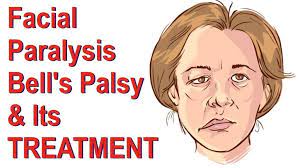
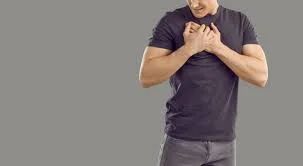
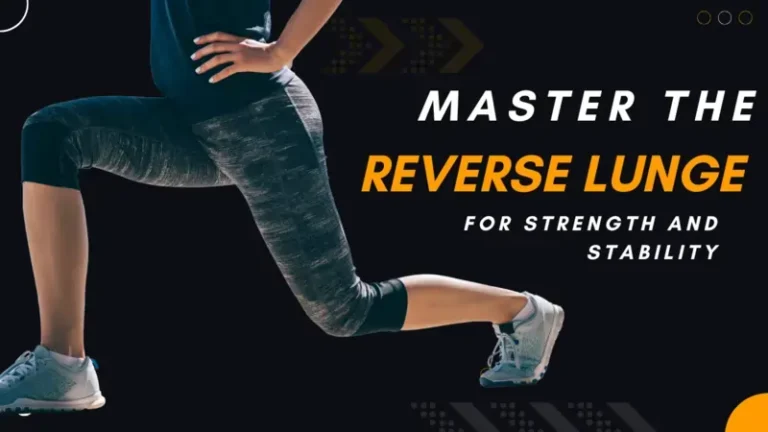
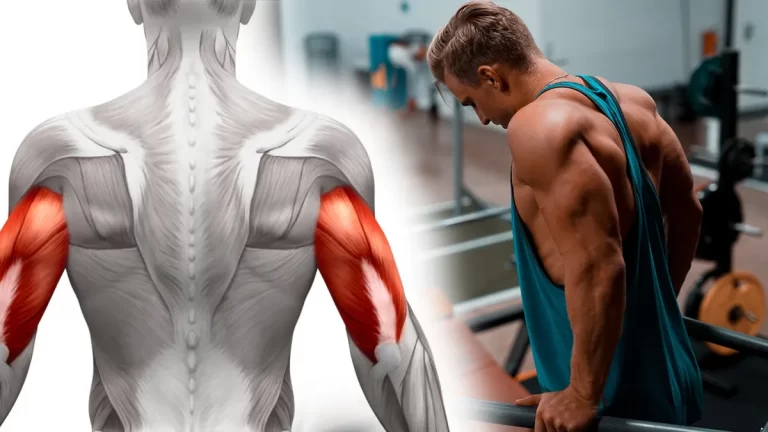
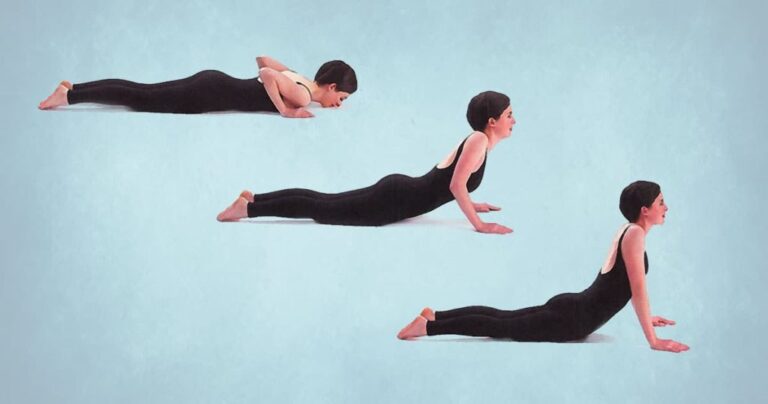
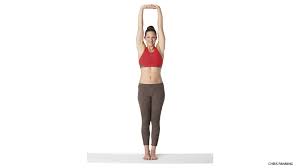
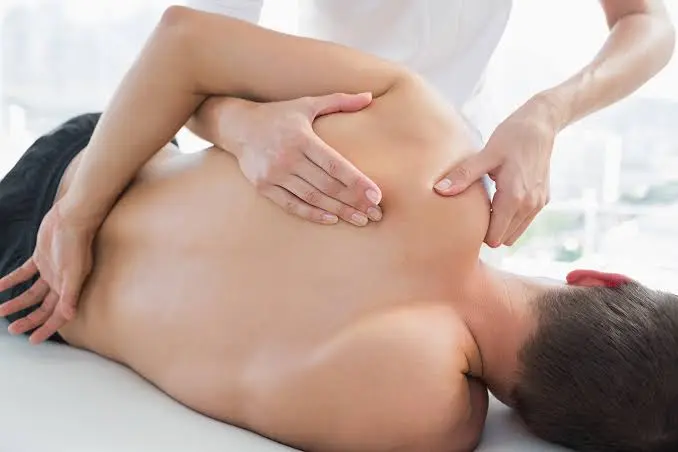
9 Comments